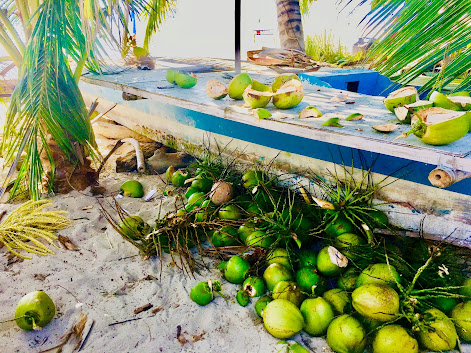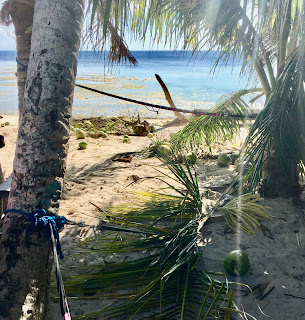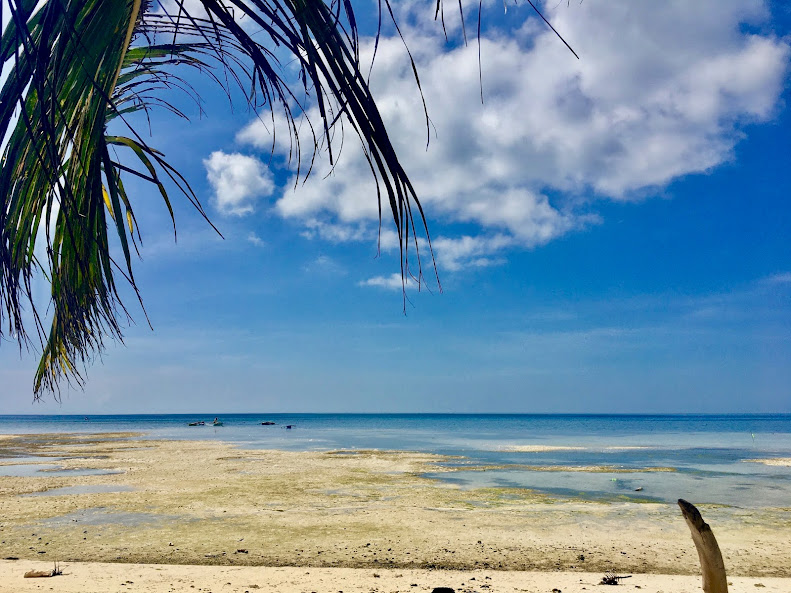https://www.tripadvisor.com/Hotel_Review-g3175044-d15039417-Reviews-Sunny_Side_Bed_Bar-San_Juan_Siquijor_Island_Visayas.html
Balette trees are known to home mythical creatures like fairies, demons and elves. the island is known for its faith healing and witchcraft, the tree itself is over 400 years old with a natural spring underneath it. the fish will eat your dried skin, but be careful they can be a bit rough. its free entry but you're asked to make a donation for upkeep. I was climbing round the tree, slipped and cut my knee unfortunately. you can drink fresh coconuts, buy souvenirs and try some turmeric tea. we spent maybe half and hour or so relaxing. it wasn't very packed out but it was still relatively busy.
b
Witches of Philippines' Siquijor Province
Siquijor (15 miles from Demabguete on the island of Negros by ferry) is an island province famous for its witches and faith healers and nice deserted beaches. A number of shaman, mananambals (good and evil witches and warlocks) and sorcerers are said to live in Sant Antonio. The “bad side” sorcerers use voodoo potions, spider and poisonous snake agents and powerful plants to help people seeking revenge against others. The “good side” sorcerers are basically herbalists who use traditional medicine, oil massages, chants and prayers to help people feel better or overcome problems or diseases.
Sorcery mingled with elements of Catholicism thrives on Siquijor. Many rituals and potions involve the use of lighting teeth, tooth-shaped pieces of basalt that are said to appear at the base of trees struck by lightning. Wooden amulets often have sweet, earthy-smelling herbs mixed with lightning teeth. Gayuma love potions work if you apply it to the forehead of the person you are hoping to woo. Some concoction have more than a hundred herbs. The biggest events are cockfights. During Holy Week tang alap rituals are conducted.
Reporting from Siquijor, Benjamin Haas wrote in the Los Angeles Times, “At the end of a dirt road deep in the mountains, Consolacion Acay hobbled onto her porch and picked up her tools of the trade: a glass cup, a bamboo straw, a stone the size of an apricot pit and a bottle of potion. Then she began casting spells to heal her client. "I found this stone while I was swimming near waterfalls in the middle of the island," the unassuming 86-year-old said later. "That night I had a dream that taught me how to use the stone to heal people, and I've been doing it ever since." Acay dabbed the potion on certain points of her client's body, then half-filled the cup with water, dropped the stone in and began blowing air into the water with the straw. The water became murky — a sign, she said, that she was removing the malaise. She repeated the process until the water was clear. [Source: Benjamin Haas, Los Angeles Times, October 30, 2011 ==]
“Acay's magic doesn't put her on the fringe of society here; sorcery, both for good and evil, is a fact of life in Siquijor. Throughout the Philippines, mention of this place instantly conjures images of healers, witches and demons. One gruesome tale features a vampire that splits in two, its upper torso flying from rooftop to rooftop, devouring fetuses out of pregnant women. Magic in Siquijor consists mainly of traditional beliefs that have existed in the Philippines for centuries. When the Spanish arrived in the 16th century and introduced Catholicism, locals began to blend ancient practices with their newfound religion. ==
“Many witches in Siquijor use Catholic imagery in their sorcery, and almost all regularly attend church. All their potions for the year are brewed in the week leading up to Easter. Father Larry Catubig, the senior Catholic priest on the island, said he realized the complicated nature of proselytizing to religiously devout witches. "It's good that the witches are going to church, and we try to steer them away from magic," he said. "But when they go back into the mountains, we have no control over what they do." ==
During Holy Week, vigilance is required at the religious processions because the witches steal parts of the relics on display for use in their potions, Catubig said. It's not unusual for gravestones in Siquijor to have pieces missing — stone angels without heads or perhaps a stump where a cross once stood. Often it's the work of "black witches" looking to enhance their brew. ==
“Although Acay works strictly in healing the sick, other witches here aren't so benevolent. Cayetano Umbalsa, 76, has been practicing witchcraft since his father began teaching him almost 60 years ago. Although he is well-versed in the healing spells, people come to him mainly for his proficiency in the dark arts. Jealous spouses and scorned lovers make up the bulk of such clients. The spells range from one to make your ex-lover constantly remember your face to those to cause sickness and even death. The black witches command steep fees: $345 to almost $700 in a region where the average annual income is about $2,500. The witches who limit their work to healing often ask for a small donation of a few dollars. ==
“Richard Quezon, the mayor of Siquijor town, the capital of the province, remembers being terrified by stories of evil witches in the mountains that rise from the middle of the island. "Before, everyone went to healers for things like liver problems or cancer," he said. "But now, with modern medicine, only those who can't afford to go to the hospital seek out healers." To some, that's a positive development. Evelyn C. Retana, a retired surgeon at the Siquijor town hospital, has seen sick people spend months hoping to be healed by witches only to eventually seek treatment at the hospital. But Quezon defends witchcraft. Last month he went to a witch because of a skin condition that wouldn't go away. "The medicine from the pharmacy didn't work, but the herbs and spells from the healer worked right away," he said. "Some things science can't explain."” ==
https://siquijor-island.com/cantabon-cave/


















































































No comments:
Post a Comment